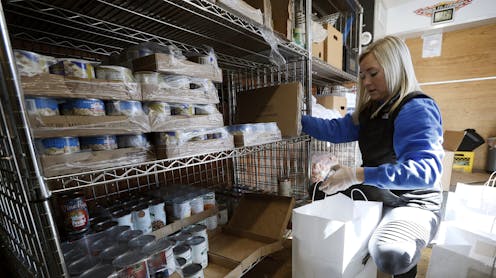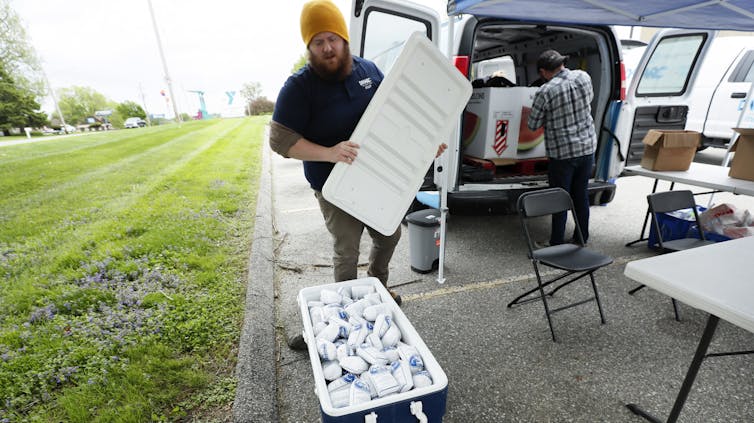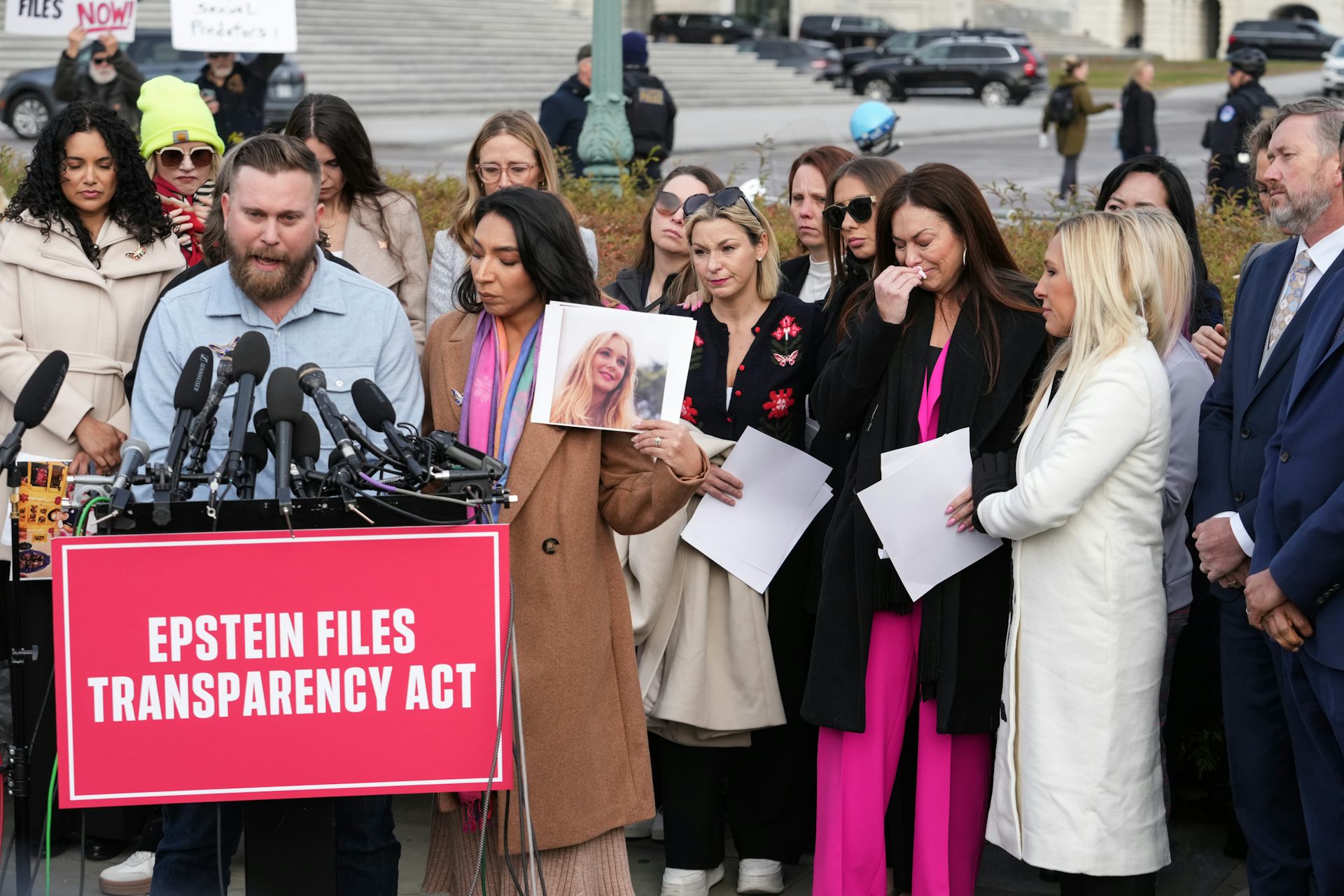Des Moines food pantries face spiking demand as the Iowa region’s SNAP enrollment declines
While Iowa is a big food producer, many people in the state need help getting enough to eat.

As part of its drive to cut federal spending, the Trump administration has paused over US$500 million of funds that had previously flowed annually to food banks across the U.S. It’s not the only policy change that could make it harder than it already is for many Americans to get enough to eat.
I’m a professor of statistics who finds hidden patterns in data related to food insecurity in Iowa. I also serve on the board of directors of Iowa’s largest network of food pantries.
Food pantries in Iowa have seen demand for their assistance soar in recent years. At the same time, fewer Iowans have been enrolled in the Supplemental Nutrition Assistance Program, through which low-income Americans get money from the government to buy groceries.
Hunger in the breadbasket of the world
It may seem illogical that anyone in Iowa would need help obtaining food.
Known as the “breadbasket of the world,” my state plays a crucial role in food production as a top supplier of grain, meats and eggs to both domestic and international markets.
For example, in 2023, Iowa led the nation in corn production, harvesting over 2.5 billion bushels. It’s also the top producer of eggs, supplying more than 13 billion eggs per year.
Despite this agricultural abundance, food insecurity – not being able to maintain an adequate diet – is a pressing issue. In 2022, an estimated 1 in 9 Iowans were hungry. This rate was even higher among children: 1 in 6.

Food pantries struggle to keep up
Many food-insecure families turn to food pantries to fill their refrigerators and cupboards.
The Des Moines Area Religious Council operates 14 food pantries in the Polk County area. This network of food pantries has been seeing record-breaking demand. It provided food to more than 70,000 people in 2024, up from 59,000 a year earlier.
About 35% of the people it supports are children. This rate has been increasing since government phased out COVID-19 pandemic-era programs, such as the Child Tax Credit expansion and summer EBT, a federal nutrition program that helped low-income families feed their kids when schools were closed.
Some 19% of food pantry clients in the Des Moines region are unemployed adults, only 8% are people who are 65 and up, and 38% are adults who are either working or have disabilities.
Scaling back benefits in 2022
Early in the pandemic, Congress temporarily expanded SNAP by providing everyone enrolled in the program with the maximum amount of benefits for which they were eligible based on the number of people in their family, regardless of their income. Normally, only 37% of the people who get SNAP benefits get the maximum amount. For 2025, for example, a family of three can get up to $768 a month through the program.
In March 2022, Iowa became one of the first states to end this policy, creating a natural experiment of sorts at a time when food prices were rising quickly.
As you might expect, the number of clients visiting food pantries surged once that policy changed. This trend continued throughout 2024, with many months of record-breaking demand at the state’s food pantries.
Hunger is up, SNAP enrollment is down
While most food pantry visitors in Polk County qualify for at least some SNAP benefits, only around 1 in 3 are enrolled in the program today, down from 44% in 2020.
This decline in SNAP enrollment is placing more pressure on the food pantries trying to make up the difference.
Low SNAP enrollment rates can be partly explained by low benefit amounts, which is all that some eligible individuals and families qualify for.
Recent laws have made it more difficult for families to be eligible to receive benefits. In 2023, Iowa introduced a state-specific asset test, which limits the total assets of all members of a family to $15,000 in order to maintain eligibility. This test includes the value of boats, vacation homes and savings accounts. It also includes a second vehicle used for household transportation purposes, but not a family’s primary residence.
Another consideration is time management, especially in light of the additional administrative hurdles.
“The time it is taking these working households to get and maintain their SNAP benefits is significantly more time and effort than simply visiting a local food pantry,” said Matt Unger, Des Moines Area Religious Council’s CEO. “Here in Iowa, we are facing nearly a 17-year low in SNAP enrollment while food banks and food pantries across the state are breaking records every month. Something just doesn’t add up.”
Congress is currently deciding whether to cut SNAP spending. If lawmakers do that, benefits will decline, increasing the strain on food pantries in Iowa and everywhere else across the country.
Lendie R. Follett is affiliated with the Des Moines Area Religious Council. She currently serves on the board of directors.
Read These Next
Midlife weight gain can start long before menopause – but you can take steps early on to help your b
What you do in the years leading up to menopause can help counter the natural hormonal effects of aging,…
Who thinks Republicans will suffer in the 2026 midterms? Republican members of Congress
The president’s party almost always loses seats in the midterms. More than two dozen Republican House…
New materials, old physics – the science behind how your winter jacket keeps you warm
Winter jackets may seem simple, but sophisticated engineering allows them to keep body heat locked in,…






